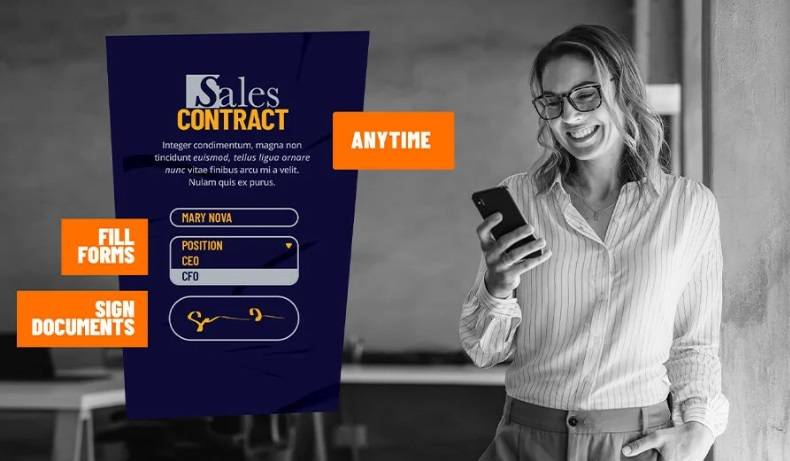- April 28, 2020
- Stanley Chow, Sr Product Marketing Manager

So you want to adopt e-signatures but you need to be sure of the legality of digital signatures. That’s understandable. After all, agreements aren’t valid until all parties have signed the dotted line. If, say, your business relies on signed forms or contract agreements, then a digital signature needs to be just as valid as its ink counterpart.
Fortunately, many jurisdictions around the world have passed legislation to ensure that eSignatures are legally admissible for business transactions.
One of the earliest legal recognitions of the electronic signature was when the United Nations Commission on International Trade Law (UNCITRAL) published the Model Law on Electronic Commerce (MLEC) in 1996. MLEC outlined a set of internationally accepted rules aimed at removing legal obstacles for electronic commerce, which helped spur the acceptance and development of e-signatures around the world.
The Legality of digital signatures in the United States
In the US, there are two major laws relating to the legality of digital signatures in place. At the state level, the Uniform Electronic Transaction Act (UETA) was signed in 1999 to standardize state laws concerning the validity of e-signatures. UETA is adopted by 47 states, along with the District of Columbia, Puerto Rico and the U.S. Virgin Islands. The other states – Illinois, New York, and Washington – have implemented their own local laws that recognize e-signatures for legal usage.
The Electronic Signatures in Global and National Commerce Act (ESIGN), a similar e-signature law at the federal level, was signed in 2000, to encourage interstate commerce.
Both laws helped lay out the legal framework for electronic signatures. Under ESIGN, a signature “may not be denied legal effect, validity, or enforceability solely because it is in electronic form.” The intent with these laws is clearly to encourage e-signature validity in order to drive more fluid business transactions.
Under both laws, an e-signature is legal and enforceable if it meets these four criteria:
- Intent to sign. Parties must clearly show intention to sign the document.
- Consent to do business electronically. Parties must indicate consent to conduct business electronically. For instance, it may ask you to click an “Accept” button on a clause to do e-business.
- Association of signature with the record. When signed electronically, the system used to capture the transaction must keep an associated record. The record must reflects the whole signature. An accurate record of the signature and it’s software need to appear on the documents. Lastly, the document must also contain the time and date stamps.
- Record retention. A record of the signing must be accessible and made reproducible to parties who signed the contract.
The US practices an open-technology approach. This means there’s no law requiring the usage of a specific signing technology to produce legally binding e-signatures. You can use the e-signature service you’re most comfortable with. This is likely to be the one your company is already using along with your PDF software. If not, be sure to check out Foxit PDF Editor. Foxit eSign software integrates directly with Foxit eSign. We have over 650M very happy customers and would love to count you among our very satisfied clients soon!
Getting Started
If you’re ready to start using e signatures, the first step is understanding what technology best fits your needs and workflow. You also need to understand how different solutions work and what their capabilities are. The next section covers all these topics in more detail.
Technology
There are a few ways one can collect and store electronic signatures. The three most common technologies used to create legally binding e-signatures are:
1. Electronic signatures based on public key infrastructure (PKI): These signatures use encryption and require each signer to have their own unique digital ID, which is verified by a Certificate Authority (CA). This type of signature is often the go-to for high-value electronic transactions in the US.
2. biometric signatures: These are based on fingerprint, iris, or facial recognition and require the signer to be physically present.
3. Simple electronic signatures (SES): These signatures don’t require any special hardware or software and can be created with a mouse, stylus, or finger on a touch screen.
PKI-based signatures are the most secure but also the most expensive and complicated to set up. Biometric signatures are less secure but easier to use. SES are somewhere in between, offering a good balance of security and convenience.
When choosing a solution, you should also consider whether you need your e-signatures to be:
1. mobile-friendly: If you need to collect signatures from people who are on the go, you’ll need a solution that works on mobile devices.
2. compliant with international standards: If you do business internationally, you’ll need to use a solution that meets the requirements of the European Union’s eIDAS regulation.
3. integrated with other systems: If you need to integrate your e-signature solution with other software (such as a CRM or ERP system), look for a solution that offers APIs or webhooks.
Foxit eSign services is all three—mobile-friendly, compliant with international standards, and easily integrated with other systems via APIs or webhooks.
Get yours today and try Foxit’s Free PDF Editor for 14 days.
